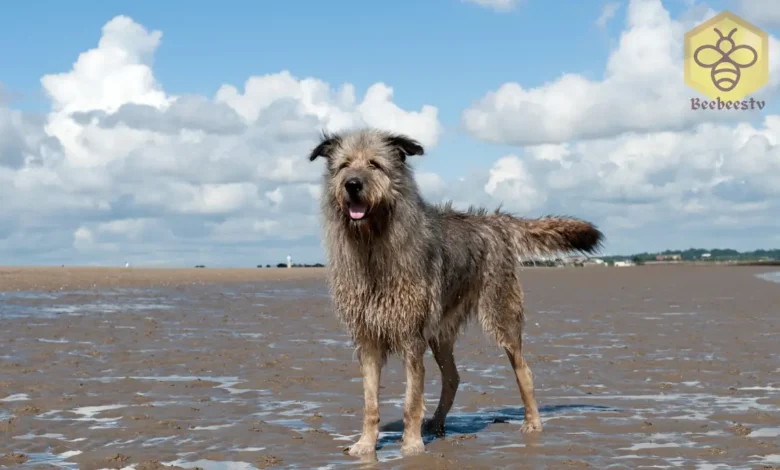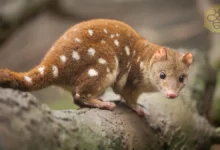Irish Wolfhounds: The Majestic Giants of the Canine World

Irish Wolfhound: The Majestic Giant of the Canine World
Irish Wolfhounds
The Irish Wolfhound is one of the most awe-inspiring dog breeds, known for its impressive size, gentle temperament, and historical importance. Originally bred to hunt wolves and large game, this ancient breed has become a beloved companion for many dog lovers around the world. Although its sheer size can be intimidating, the Irish Wolfhound is a gentle giant with a loyal and affectionate nature.
Scientific Name
The scientific name of the Irish Wolfhound, like other domestic dogs, is Canis lupus familiaris.
Common Name
The breed is commonly known as the Irish Wolfhound, reflecting its original purpose: hunting wolves in Ireland.
Scientific Classification
| Kingdom | Animalia |
| Phylum | Chordata |
| Class | Mammalia |
| Order | Carnivora |
| Family | Canidae |
| Genus | Canis |
| Species | Canis lupus |
| Subspecies | Canis lupus familiaris |
Types of Irish Wolfhounds
While there are no official subspecies of the Irish Wolfhound, the breed can vary slightly in size and coat texture, depending on breeding lines. However, all Irish Wolfhounds share the same basic physical and behavioral characteristics that define the breed.
Habitat
Irish Wolfhounds do not have a “natural” habitat, as they are a domestic breed. Historically, they thrived in the green, open landscapes of Ireland, where they were used for hunting and guarding. Today, Irish Wolfhounds can live comfortably in homes with ample space for them to move around. They are best suited to homes with large yards, as their size and need for exercise mean they require room to stretch their legs.
Physical Characteristics
The Irish Wolfhound is the tallest dog breed in the world, often compared to a small horse because of its size and stature. Some key physical traits include:
- Size: Male Irish Wolfhounds can reach up to 32-35 inches (81-89 cm) at the shoulder, while females are slightly smaller. Their weight ranges from 140 to 180 lbs (63-82 kg).
- Coat: They have a rough, wiry coat that can come in various colors, including gray, brindle, red, black, white, and fawn. Their coats help protect them from harsh weather conditions.
- Head and Eyes: Their head is long and narrow, with small, dark eyes that convey a soft and gentle expression.
- Legs and Body: The Irish Wolfhound has long, muscular legs and a deep chest, which gives them a commanding yet elegant appearance. Despite their size, they are graceful and capable of great speed.
Diet
Irish Wolfhounds, due to their large size, have significant nutritional needs. Their diet should consist of:
- High-quality dog food (either commercially prepared or home-cooked with veterinary guidance)
- Meat-based proteins, which are essential for maintaining their muscle mass
- Carbohydrates like rice or potatoes for energy
- Fruits and vegetables for balanced nutrition
Puppies require special attention to their diet to avoid rapid growth, which can lead to skeletal issues. Owners need to provide controlled portions and avoid overfeeding, as excessive weight can put unnecessary strain on their joints.
Predators and Threats
As domestic animals, Irish Wolfhounds do not face natural predators in the wild. However, they can be susceptible to certain health problems that threaten their longevity:
- Heart disease, particularly dilated cardiomyopathy, is common in large breeds like the Irish Wolfhound.
- Bloat (gastric dilatation-volvulus) is another health risk, a life-threatening condition where the stomach twists and fills with gas.
- Joint issues, including hip dysplasia and arthritis, are also prevalent due to their size.

Reproduction, Babies, and Lifespan
Irish Wolfhounds have a relatively short lifespan for such a large dog breed, typically living between 6 to 8 years.
- Mating and Gestation: Female Irish Wolfhounds come into heat about twice a year, and the gestation period is around 63 days.
- Litter Size: The average litter size is 4 to 8 puppies, though litters of up to 12 are not uncommon.
- Puppy Growth: Irish Wolfhound puppies grow rapidly, reaching their full height by 9 to 12 months, but they continue to fill out and mature until about 2 years of age.
Population
Irish Wolfhounds are not as numerous as many other dog breeds, but they have a dedicated following among breeders and dog enthusiasts. They are considered a rare breed, with breeders working diligently to preserve their unique traits and ensure the breed’s health and longevity. Due to their size and specific care needs, they are not as commonly found in households as smaller, more manageable dog breeds.
Behavior and Lifestyle
Despite their imposing size, Irish Wolfhounds are known for their calm and friendly demeanor. They are often referred to as “gentle giants” because of their patient and loving nature.
- Temperament: Irish Wolfhounds are incredibly loyal, affectionate, and great with children. They are not aggressive dogs but are protective of their family.
- Exercise Needs: They require moderate daily exercise to keep them healthy. A large yard where they can run freely is ideal, but they also enjoy long walks.
- Indoors vs Outdoors: While they enjoy outdoor activities, Irish Wolfhounds are indoor dogs. Their bond with humans makes them prefer being close to their family, and they do not fare well if left outside for long periods.
- Training: Irish Wolfhounds are intelligent but can be somewhat stubborn. Early socialization and training are essential to manage their size and ensure they are well-behaved companions.
Ecological Role
As a domestic breed, Irish Wolfhounds do not have a direct ecological role like wild animals. Historically, their role was crucial in controlling the populations of large game and predators like wolves and boars in Ireland. Today, their ecological impact is minimal, but they do contribute to human society by being loyal companions and protectors.
FAQs About Irish Wolfhounds
- How big do Irish Wolfhounds get?
Irish Wolfhounds can reach heights of up to 35 inches at the shoulder and weigh between 140 to 180 pounds. - What is the lifespan of an Irish Wolfhound?
Unfortunately, Irish Wolfhounds have a short lifespan of 6 to 8 years due to their large size and associated health problems. - Are Irish Wolfhounds good with children?
Yes, they are known for being gentle, patient, and protective, making them great companions for children. - Do Irish Wolfhounds need a lot of exercise?
They require moderate exercise but not as much as one might expect for such a large breed. A daily walk and space to stretch their legs will keep them happy. - Are Irish Wolfhounds difficult to train?
Irish Wolfhounds are intelligent but can be a bit independent, so consistent, positive training is recommended from a young age.
Conclusion
The Irish Wolfhound stands as one of the most impressive and storied breeds in the canine world. Their massive size is balanced by a gentle and loyal temperament, making them ideal companions for those who can accommodate their needs. While their lifespan is short, the Irish Wolfhound leaves a lasting impression on anyone lucky enough to have one in their life. With proper care, exercise, and affection, these gentle giants can lead happy and fulfilling lives, offering unconditional love to their human families.


